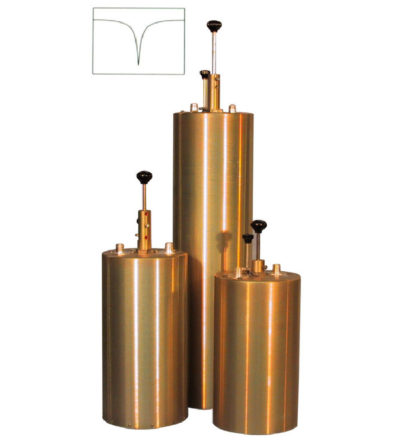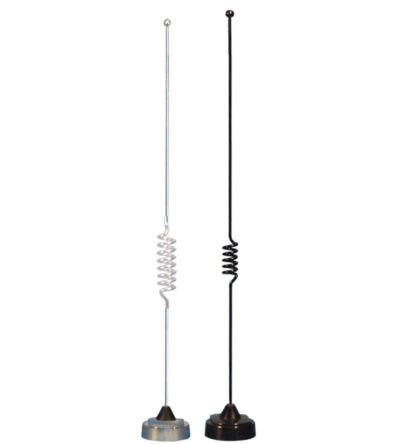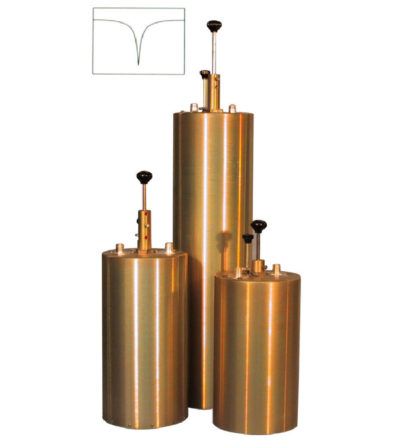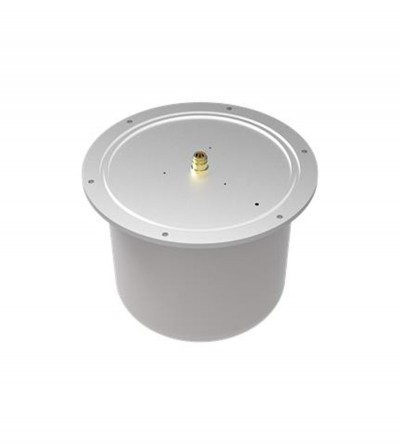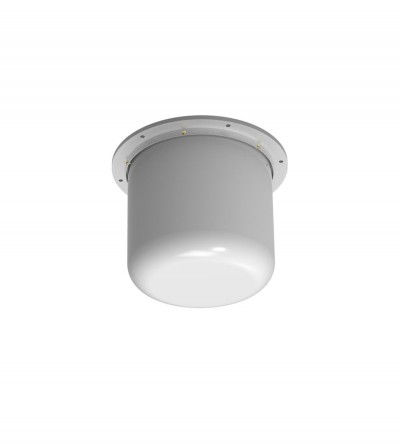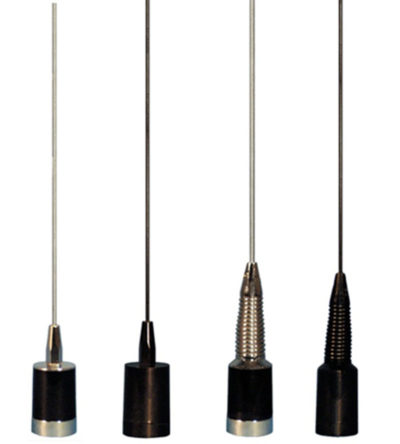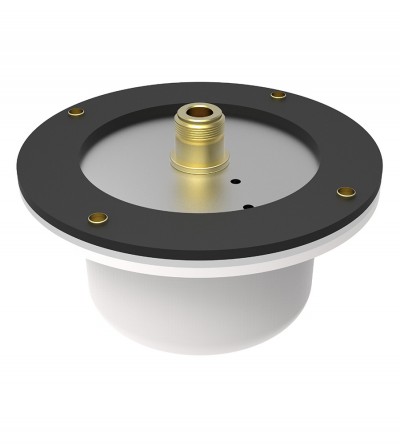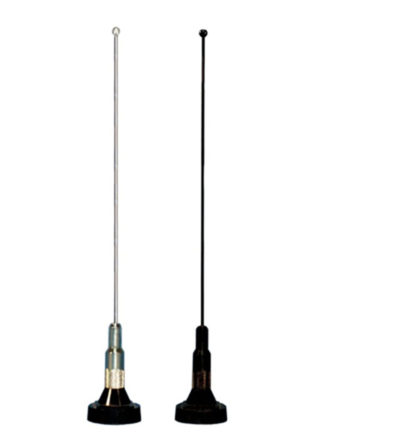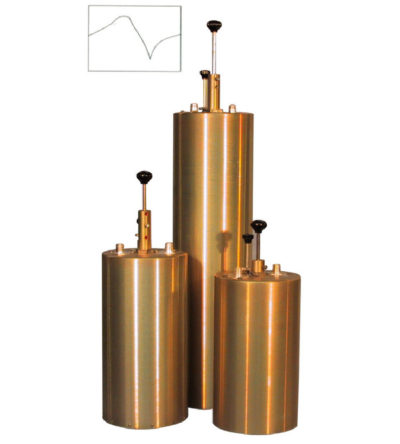- Can be cascaded or added to one another in order to sharpen the attenuation of the rejection curve
- Temperature compensated to ensure frequency stability
- High attenuation to minimize desense and interference from adjacent systems
- Adjustable loops: each cavity has a calibration index
-
 Designed to reject one narrow band of frequencies, while letting all others pass in the operating band
Designed to reject one narrow band of frequencies, while letting all others pass in the operating band -

- 3.0 dBd gain achieved by featuring a 5/8-wave above a ¼ wave open coil design
- Manufactured using the best corrosion-resistant materials and finishes available
- Ultrasonically-welded brass insert and leaf spring-loaded contact for long-term reliability
- Standard NMO type mount providing an excellent moisture seal even when the antenna is removed
-
 Designed to reject one narrow band of frequencies, while letting all others pass in the operating band
Designed to reject one narrow band of frequencies, while letting all others pass in the operating band- Can be cascaded or added to one another in order to sharpen the attenuation of the rejection curve
- Temperature compensated to ensure frequency stability
- High attenuation to minimize desense and interference from adjacent systems
- Adjustable loops: each cavity has a calibration index
-

 Designed for external Public Safety Radio Frequencies to propagate within buildings, tunnels or public use environments
Designed for external Public Safety Radio Frequencies to propagate within buildings, tunnels or public use environments- Offered with Fire Retardant 6200 Kydex
- Meet the recommended fire safety practices of both the Federal Transit Administration (FTA) and the Federal Rail Administration (FRA) for smoke emission and flammability as tested under ASTM E-662 and ASTM E-162
-

 Designed for external Public Safety Radio Frequencies to propagate within buildings, tunnels or public use environments
Designed for external Public Safety Radio Frequencies to propagate within buildings, tunnels or public use environments- Offered with Fire Retardant 6200 Kydex
- Meet the recommended fire safety practices of both the Federal Transit Administration (FTA) and the Federal Rail Administration (FRA) for smoke emission and flammability as tested under ASTM E-662 and ASTM E-162
- The F-3749 Antenna is available in custom colors for orders of 150 or more.
-
 Designed for external Public Safety Radio Frequencies to propagate within buildings, tunnels or public use environments
Designed for external Public Safety Radio Frequencies to propagate within buildings, tunnels or public use environments- Designed for mounting on a concrete surface to meet full bandwidth specifications
- Meet the recommended fire safety practices of both the Federal Transit Administration (FTA) and the Federal Rail Administration (FRA) for smoke emission and flammability as tested under ASTM E-662 and ASTM E-162
- Flame resistant and self-extinguishing polycarbonate tubing is used for the radome
-

- 3.0 dBd gain achieved by featuring a 5/8-wave whip with a base loaded matching coil
- Manufactured using the best corrosion-resistant materials and finishes available
- Triple-plated chrome brass with a large insert molded low-loss coil form and spring-loaded, gold-plated contact
- Large diameter coil form which allows for a wider operational bandwidth and better matching characteristics
- Rubber boot and overlap construction to ensure a moisture-proof installation
- Standard Motorola NMO type mount
-

 Designed to reject one narrow band of frequencies, while letting all others pass in the operating band
Designed to reject one narrow band of frequencies, while letting all others pass in the operating band- Can be cascaded or added to one another in order to sharpen the attenuation of the rejection curve
- Temperature compensated to ensure frequency stability
- High attenuation to minimize desense and interference from adjacent systems
- Adjustable loops: each cavity has a calibration index
-
 Designed to reject one narrow band of frequencies, while letting all others pass in the operating band
Designed to reject one narrow band of frequencies, while letting all others pass in the operating band- Can be cascaded or added to one another in order to sharpen the attenuation of the rejection curve
- Temperature compensated to ensure frequency stability
- High attenuation to minimize desense and interference from adjacent systems
- Adjustable loops: each cavity has a calibration index
-
 Designed for external Public Safety Radio Frequencies to propagate within buildings, tunnels or public use environments
Designed for external Public Safety Radio Frequencies to propagate within buildings, tunnels or public use environments- Offered with Fire Retardant 6200 Kydex
- Meet the recommended fire safety practices of both the Federal Transit Administration (FTA) and the Federal Rail Administration (FRA) for smoke emission and flammability as tested under ASTM E-662 and ASTM E-162
-
 Unity gain in a wideband design for heavy-duty service
Unity gain in a wideband design for heavy-duty service- Manufactured using the best corrosion-resistant materials and finishes available
- Ultrasonically-welded brass insert and a gold-plated spring-loaded contact
- Shipped with a 19” whip that can be cut by the customer to any frequency between 136 MHz and 960 MHz
- Standard Motorola NMO type mount providing an excellent moisture seal even when the antenna is removed
-
 Designed to pass a frequency band and reject a narrow band of frequencies
Designed to pass a frequency band and reject a narrow band of frequencies- Can reject frequencies on either the high or low side of the pass frequency
- Temperature compensated to ensure frequency stability
- High attenuation to minimize desense and interference

